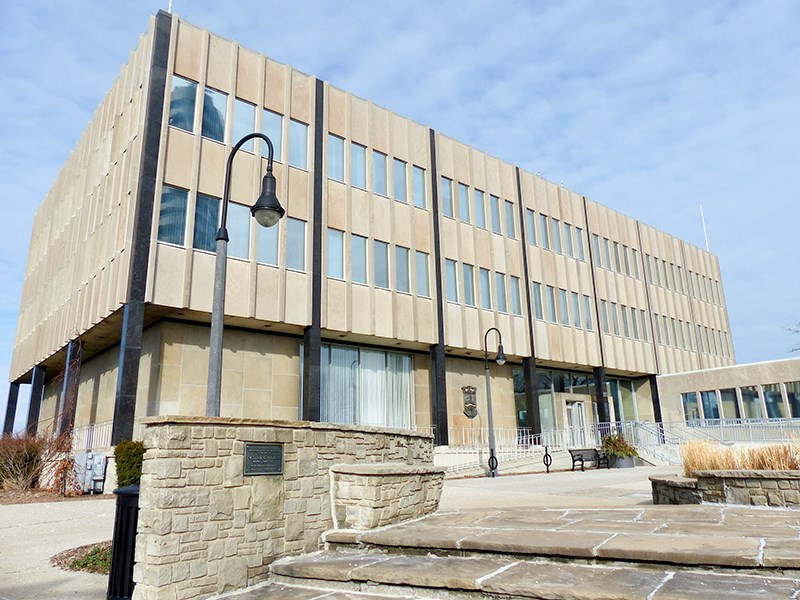Sarnia stands at a pivotal moment in its development, facing challenges that include housing affordability, homelessness, and the growth strain of encampments. As Draft 2 of the proposed zoning by-law is under review—the first major update in decades—its implications for the city’s growth, economy, and housing landscape warrant careful attention.
Central to the discussion is the concept of infill development and how zoning policies can either unlock its potential or create unnecessary roadblocks. Here’s why the new by-laws matter and what’s at stake for Sarnia.
Why Housing Supply and Affordability Go Hand-in-Hand
Sarnia currently ranks 95th out of 100 in housing starts—a stark indicator of how far we need to go to meet the demand for housing.
When housing supply is limited, landlords hold significant power, often leading to higher rents and lower housing quality. Scarce supply also drives predatory practices like “renovictions,” where tenants are displaced under the guise of renovations only to see rents increase beyond affordability.
On the other hand, an abundance of housing naturally balances this power dynamic. With more options, tenants gain leverage, and landlords are incentivized to maintain and improve their properties to attract and retain residents. Simply put, when housing options are plentiful, everyone benefits.
The Role of Infill Development
Infill development—the process of building within existing neighbourhoods—offers an efficient, sustainable solution to housing shortages. By utilizing existing infrastructure and increasing population density, infill development can reduce urban sprawl and foster activities that enhance community vibrancy, such as improved access to local businesses and greater opportunities for social interaction.
Current zoning regulations in Sarnia introduce complexities for infill projects. While the new Official Plan outlines a vision for progress, some aspects of the draft zoning by-laws include requirements that may pose challenges for development:
-
Restrictive lot sizes: These could make it difficult to repurpose smaller lots for multiplexes or accessory dwelling units.
-
Setback rules: These may reduce buildable space, which could make certain projects less viable.
-
Parking mandates: Requiring too many parking spaces in areas where active transportation or transit could be prioritized
These restrictions create obstacles to the gradual, incremental growth that’s essential for Sarnia to adapt and thrive.
Exploring incremental development
Incremental development—allowing neighbourhoods to grow by small steps, like converting a single-family home into a duplex or adding a granny flat—is a proven method for creating diverse, affordable housing options without disrupting community character.
This approach offers several benefits:
- Empowering Residents: Instead of waiting for large-scale developers, homeowners can be the creators of new housing. A family might build a basement apartment or convert their garage into a rental unit.
- Strengthening Communities: Small-scale, owner-occupied rental units encourage personal relationships between landlords and tenants, often resulting in better care for properties and stronger neighbourhood ties.
- Economic Growth: Infill development creates local jobs, attracts new residents, and broadens the tax base—all while using existing infrastructure more efficiently.
- Affordable Housing Options: Missing Middle Housing (like duplexes, fourplexes, and courtyard apartments) provides options for a range of incomes and lifestyles, from young professionals to seniors downsizing.
The Economic Considerations of Missing Middle Housing
Zoning policies that enable Missing Middle Housing could have several economic implications for Sarnia:
-
Housing supply: Incremental development may help increase the availability of smaller-scale housing options, potentially easing competition in the housing market.
-
Infrastructure costs: Infill development uses existing roads, utilities, and public services, which could be more cost-effective compared to expanding into undeveloped areas.
-
Business Growth: Higher population density in walkable areas like Downtown and Mitton Village might supports local businesses.
-
Market Stability: A higher vacancy rate contributes to a more balanced rental market, leading to better-maintained properties and fairer rent prices.
Without significant updates to the zoning by-law, Sarnia risks stifling growth and innovation. The current framework prioritizes single-family homes and restricts the types of housing that meet the needs of a changing population. This "business as usual" approach exacerbates housing shortages and leaves families, seniors, and young professionals with few affordable options.
Meanwhile, cities that embrace flexible zoning policies are seeing significant benefits, from revitalized neighbourhoods to thriving local economies. Sarnia must act now to stay competitive and meet its residents' needs.
Possible adjustments to support Sarnia's growth
To address potential challenges in the proposed zoning by-laws, the following changes could be considered:
-
Enable Missing Middle Housing: Allow properties to transition from single-family homes to duplexes, triplexes, or fourplexes without requiring variances.
-
Review parking requirements: Reducing parking mandates in areas with transit access or active transportation options could improve feasibility for smaller-scale developments.
-
Adjust lot size and setback rules: Modifying these requirements could make it more practical for small-scale developers to pursue projects on smaller lots.
-
Streamline approvals: Simplifying the process for infill development and accessory dwelling units may encourage more participation in incremental housing solutions.
How to get involved
Although the deadline for submitting written comments has passed, residents can still participate in discussions about the proposed zoning by-laws:
-
Attend and speak at the council meeting: Pre-register to share your thoughts or concerns during the December 16 meeting by emailing [email protected] or calling 519-332-0330 ext. 3320.
-
Visit the zoning by-law webpage: Explore the draft by-laws and additional information at Speak Up Sarnia.
-
Join the conversation at the council meeting: Attend the December 16 council meeting to engage with city leaders and other residents about the future of Sarnia's development.
